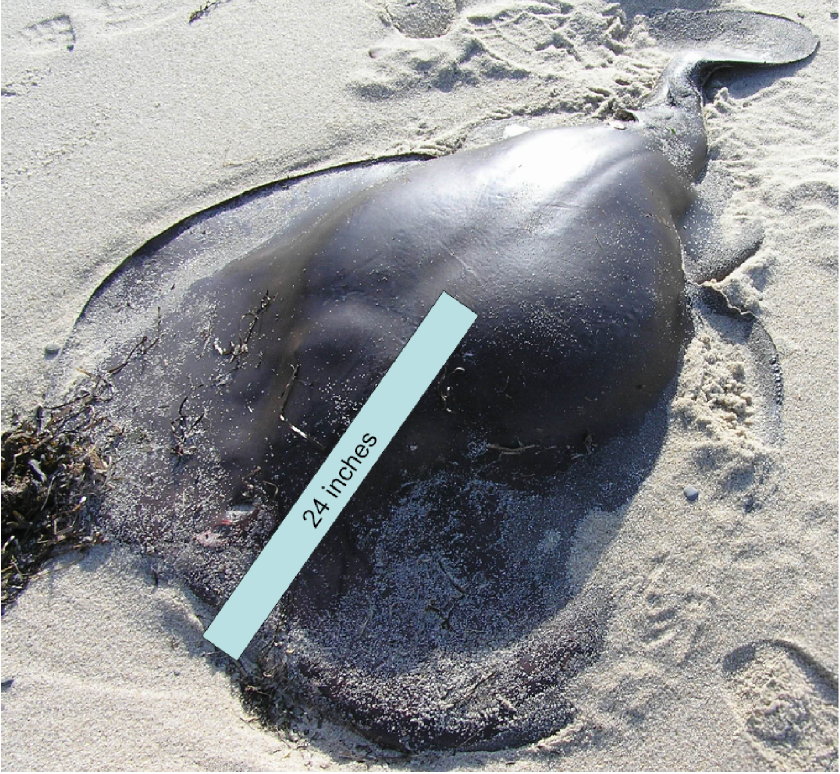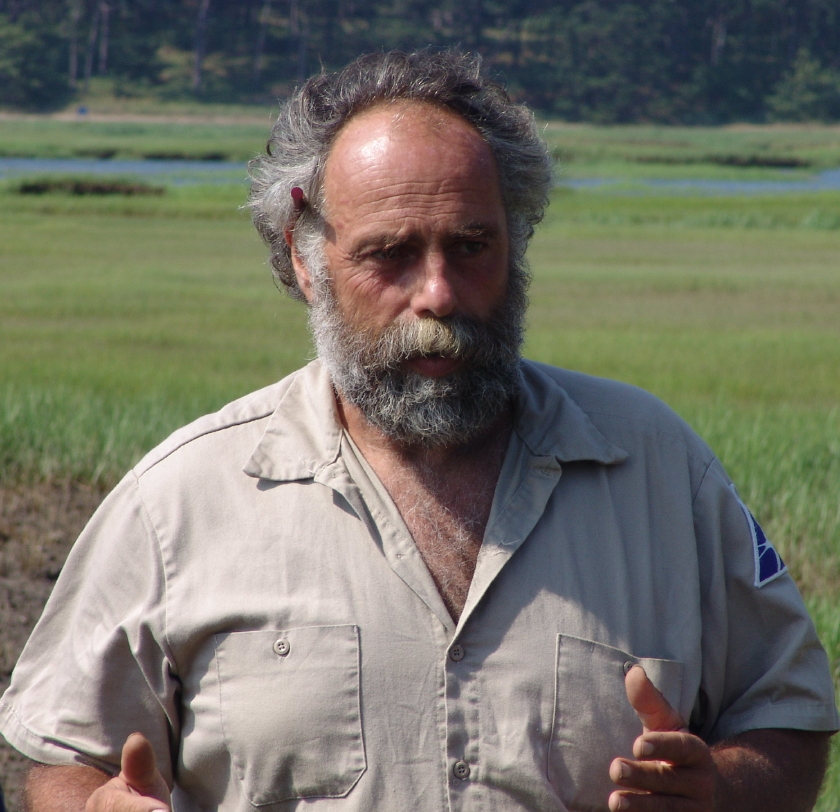Large Torpedo Ray on Wellfleet Bayside Beach
Turtle Journal learned today of the sixth and seventh torpedo ray sightings of the fall season. You may recall that we had reported previously about Shocking Discovery! Torpedo Ray in Wellfleet Bay, Torpedoes Los!, and More Torpedo Rays Raise More Questions. Today’s reports add to the mystery of torpedo ray strandings on bayside beaches this season. The “old boys network” says that a couple or three torpedo rays a season may have been the most documented by observant naturalists in other years, and many seasons saw no torpedo rays at all. There’s always the possibility that greater awareness of this cool critter has prompted more consolidated reporting. Whatever the cause, Turtle Journal hopes to document this season so that successor naturalists will have a base line against which to judge their findings.
Bob Prescott, Don Lewis & Kemp’s Ridley at Tip of Great Island (1999)
The National Park Service plays a key role in our sea turtle rescue operations each fall season. The long, long stretch of bayside beach from Pamet River to the tip of Great Island proves very difficult to patrol by foot at every high tide. Miles and miles of sandy beach with no public roadways to leapfrog out to the distant tip of Jeremy Point. Several Novembers ago, Bob Prescott (Wellfleet Sanctuary director) and I returned from a long, cold Brewster beach patrol at 10:30 pm to find a blinking light on the Sanctuary turtle line. “We just got back from a beach walk out to Jeremy Point,” an anonymous voice relayed, “where we found a stranded sea turtle. We didn’t disturb it. Left it on the beach. It was alive when we left.” Just what we wanted to hear so late at night with freezing rain, howling winds and plunging temperatures. We sped to the parking lot on Griffin Island and hiked the three miles out (wind at our backs) and three miles back (sleet in our faces) with a small Kemp’s ridley tucked under my overcoat.
Torpedo Ray Found North of Great Island by NPS
Now NPS rangers graciously patrol the bayside beaches all the way down Great Island in search of cold-stunned sea turtles. When they find stranded turtles, the rangers deliver them to Mass Audubon’s Wellfleet Bay Wildlife Sanctuary for triage and stabilization before the turtles are driven by volunteers to the New England Aquarium for medical care and rehabilitation. But it all starts with the turtle “EMTs” who rescue them off the beaches and thanks to the National Park Service the long, lonely stretch from Griffin Island to Jeremy Point is no longer a “sea turtle dead zone” during stranding season.
Torpedo Ray with Superimposed 2-Foot Measuring Stick
Today, Ranger Kelly patrolled that lonesome stretch and discoverd a freshly beached torpedo ray south of Bound Brook (yes, the Bound Brook of American toad fame) in north Wellfleet. He called the 24/7 Turtle Journal hotline (508-274-5108) to alert us to the discovery, and our team will dispatch to the site tomorrow to obtain scientific measurements. For general reference, we’ve inserted a 24-inch bar into the photograph above to hint at the large size of this electric ray. We thank Ranger Kelly and the NPS for the three photographs of the torpedo ray for tonight’s post.
Senior Mass Audubon Naturalist Dennis Murley
Dennis Murley of Mass Audubon’s Wellfleet Bay Wildlife Sanctuary coordinates beach searches for cold-stunned sea turtles during the fall.  We called him after our talk with Ranger Kelly to alert him that his patrols might encounter the torpedo ray and that we would be returning to the animal on Wednesday to take measurements and to investigate possible causes of its demise. Dennis told us that he had rescued a trapped torpedo ray in North Truro last week. A lifelong Cape Codder, Dennis exclaimed, “The biggest darn torpedo ray I’ve ever seen.” He said the ray had been trapped by a falling tide and Dennis was able to drag it to open water where he saw it swim away. Because of the location and the timing, there is a possibility that the ranger’s find (torpedo ray #6) and the ray that Dennis rescued (torpedy ray #7) are one and the same. We’ll know more after we examine it on Wednesday.
(ASIDE: Are we the only ones who are left wondering about Dennis, who is widely known for walking barefoot year around, and his encounter with the live, 220-volt electrically charged torpedo ray? That’s what we call a natural, non-habit forming stimulant!)





[…] Electric Torpedo Ray Found by Sea Turtle Patrol on Wellfleet Beach […]